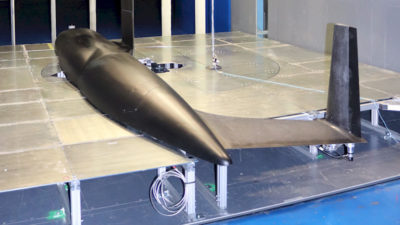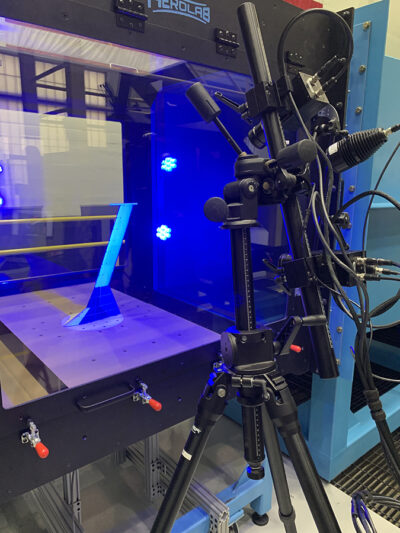Hypersonic work emphasizes practicality
By HOWARD “GREG” JOHNSTON AND KEVIN G. BOWCUTT|December 2017
The Hypersonic Technologies and Aerospace Planes Technical Committee works to expand the hypersonic knowledge base and promote continued hypersonic technology progress through ground and flight testing.
Research and development in hypersonics was aggressively pursued this year in several countries, pushing the science and engineering aspects of the field toward practical applications. Along this path, government, industry and academic institutions continued to work together to develop modeling and computational simulation capabilities, conduct ground and flight tests, mature enabling technologies and design operational systems for a new era of hypersonic flight.
The German Aerospace Center, DLR, this year compared simulations to the sounding-rocket data from the 2016 Rocket Technology Experiment-Transition, or ROTEX-T, mission. Researchers found reasonable agreement for laminar and turbulent heat fluxes during hypersonic boundary layer transition. ROTEX-T was launched on a spin-stabilized two-stage sounding rocket that reached Mach 5.4 and measured aerothermal phenomena at high-sampling rates of up to 2 megahertz.
JAXA, the Japan Aerospace Exploration Agency, decided this year to increase the Mach number to 5 for its pre-cooled turbine-based engine. JAXA plans to ground test this system at that speed in 2018. Mach 4 testing was conducted in 2016.
China was focused on key basic scientific issues associated with near-space, long-range, maneuverable hypersonic vehicles flying at altitudes of 30 kilometers to 70 kilometers.
The Indian Space Research Organization in March commissioned a hypersonic shock tunnel that is the third largest in the world in terms of simulation capabilities. The tunnel is at the Vikram Sarabhai Space Center.
At the Aerospace Systems Directorate of the U.S. Air Force Research Laboratory, or AFRL, in Ohio, funded programs include GOLauncher 1, a single stage booster for hypersonic research that in September completed subscale aerodynamic wind tunnel testing at subsonic to hypersonic speeds.
Also, at AFRL and other agencies, airframe and propulsion teams have been refining propulsion requirements via a turbine-based combined-cycle vehicle architecture study. At the conclusion of the architecture study, critical ground-based propulsion experiments will begin.
In June, an Australia-led team executed a hypersonic aerosciences experiment at the Woomera Test Range, South Australia. The team met the principal research objective of demonstrating the controlled atmospheric entry, pull-up, glide and aerodynamic maneuver of the hypersonic vehicle. The flight team partnered with Boeing, the University of Queensland, DLR and BAE Systems to develop the experiment, which was carried out under HIFiRE, the Hypersonic International Flight Research Experimentation program. HIFiRE traces its roots to 2006, when AFRL’s High Speed Aerospace Systems Directorate joined forces with the Australian Defence Science and Technology Group to develop and experimentally validate technologies deemed critical to the realization of next generation hypersonic strike and global reach capabilities. The HIFiRE team this year worked toward completing the final design, development and ground testing of the two remaining aero-propulsion flight experiments.
The Brazilian Space Agency this year joined the European Space Agency-led High-Speed Experimental Flight Vehicles-International initiative, or HEXAFLY-INT. Researchers are assessing vehicle designs for a high-speed civil transport. Brazil started the assembly of a new hypersonic facility and continues its experiments with laser-ignited hydrogen supersonic combustion.
In August, HEXAFLY-INT tests were conducted on a model of a high-speed civil transport at Russia’s TsAGI T-116 Wind Tunnel. Also this year, the idea was broached of conducing HEXAFLY-INT launches from Russia’s newly constructed Vostochniy launch site.
Contributors: Thomas A. Jackson, Douglas J. Dolvin, Barry M. Hellman, AJ Piplica, Joaquin H. Castro, Johan Steelant, Ali Gülhan, Masataka Maita, Marco Minucci and Dvoynikov Alexander



































